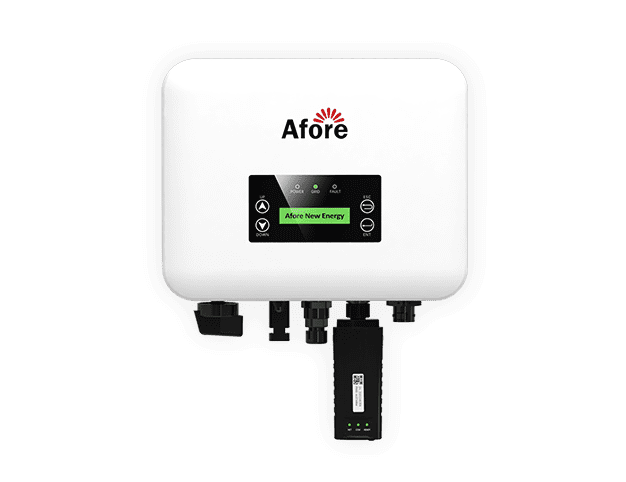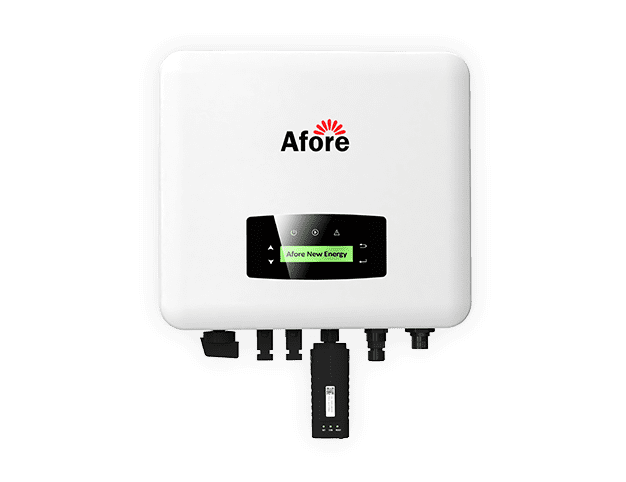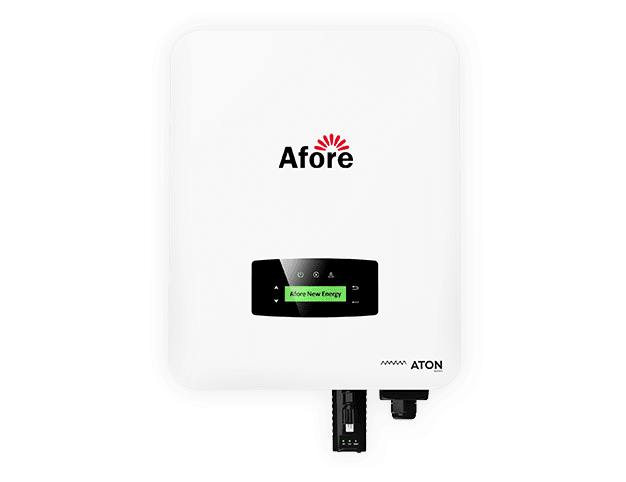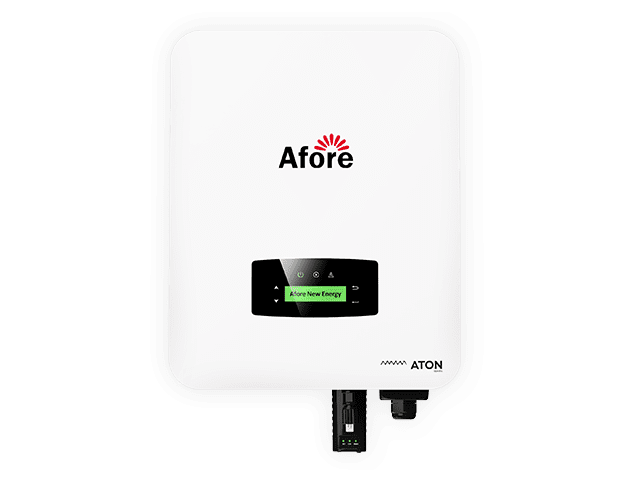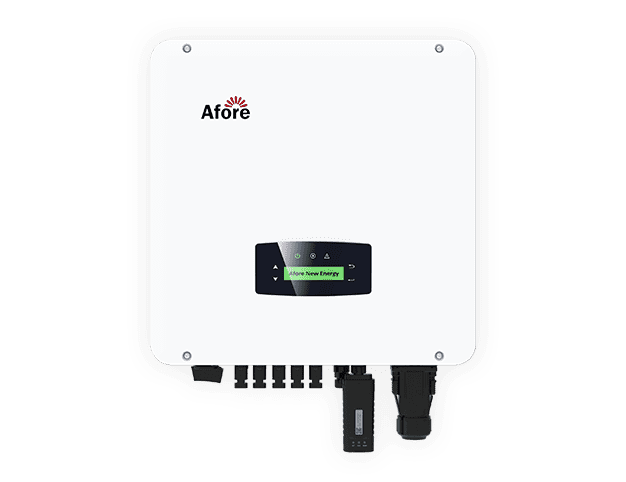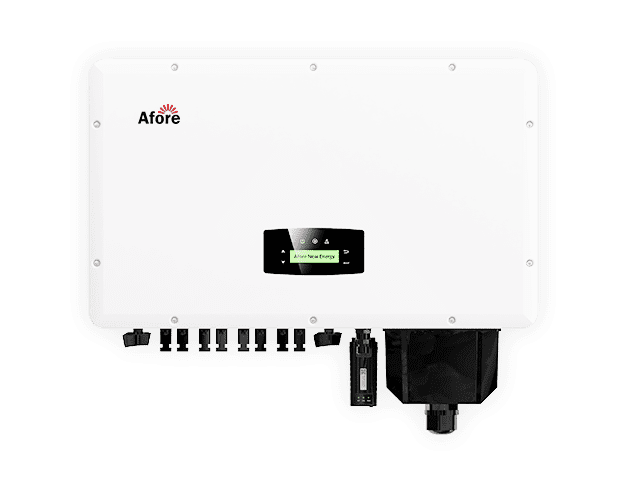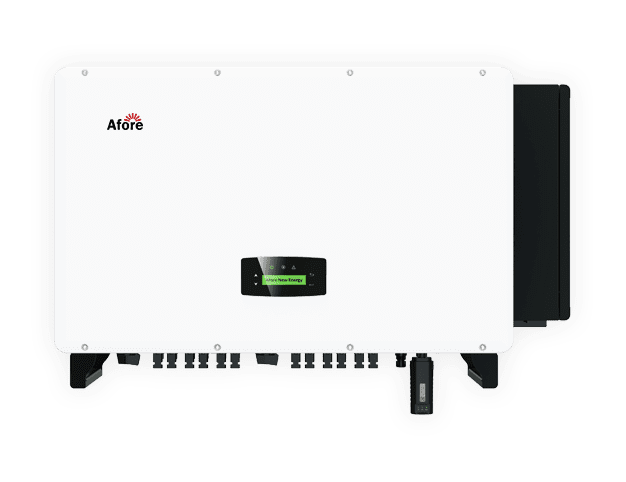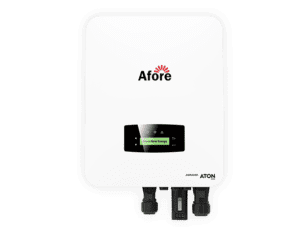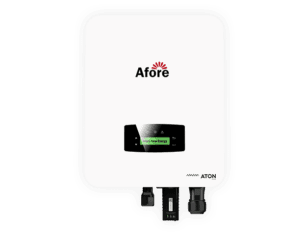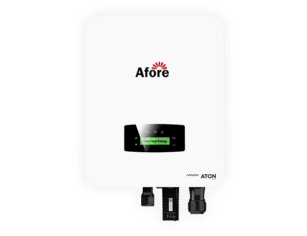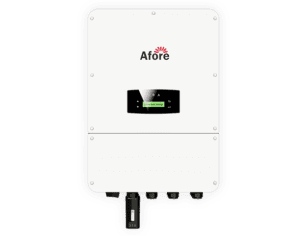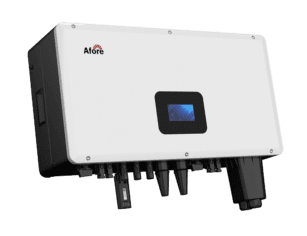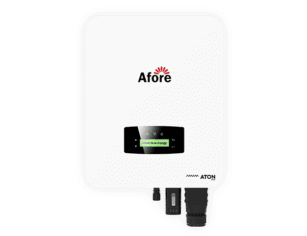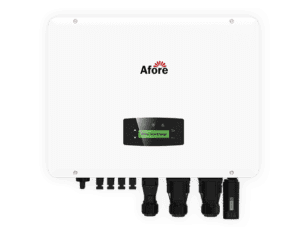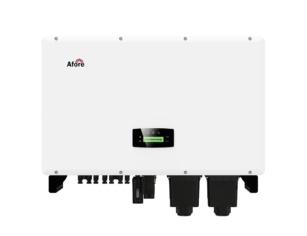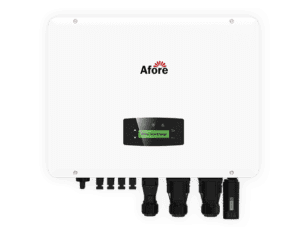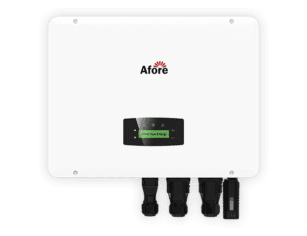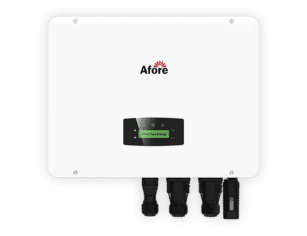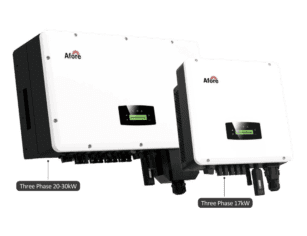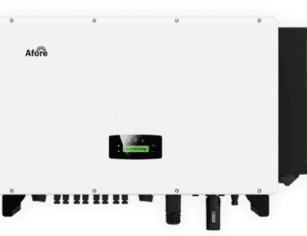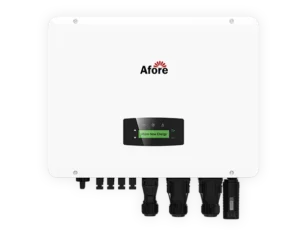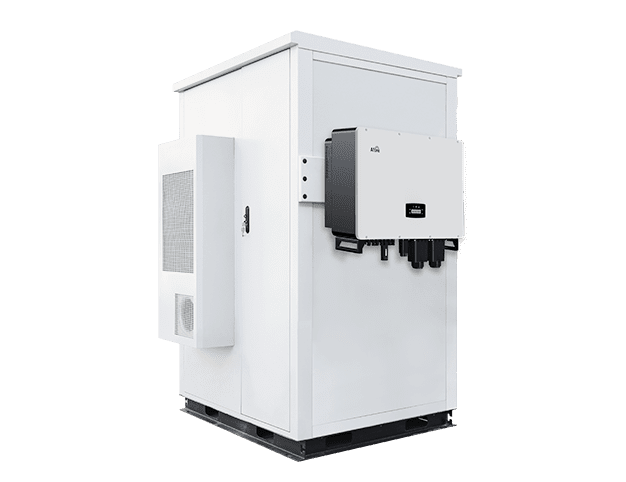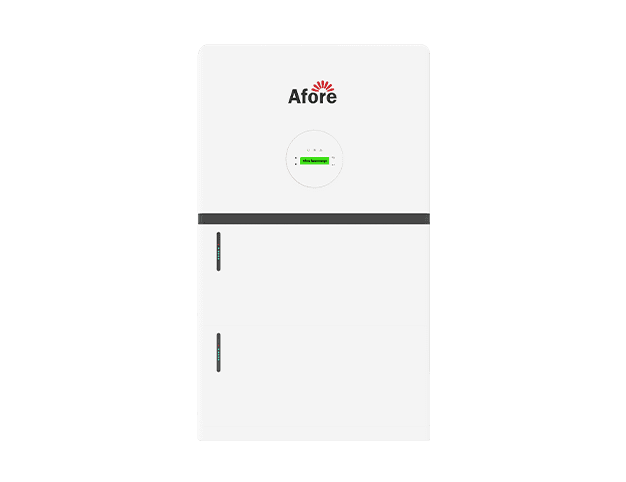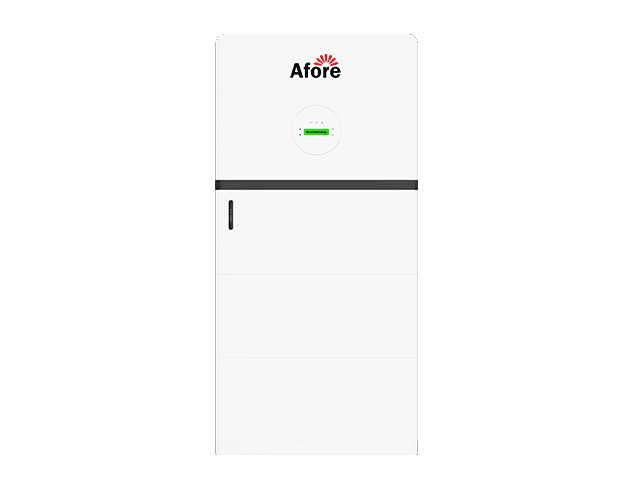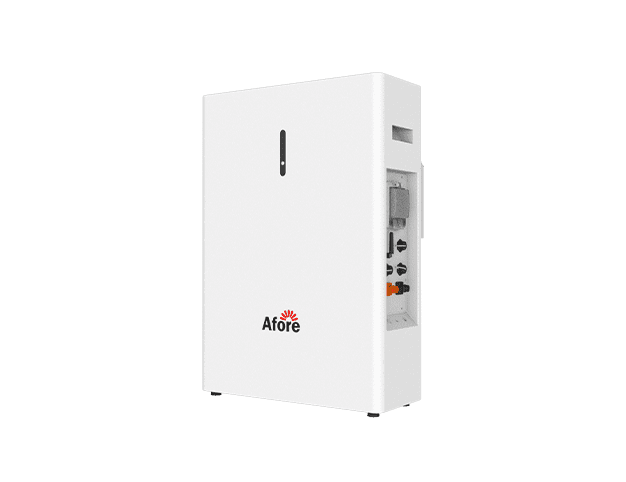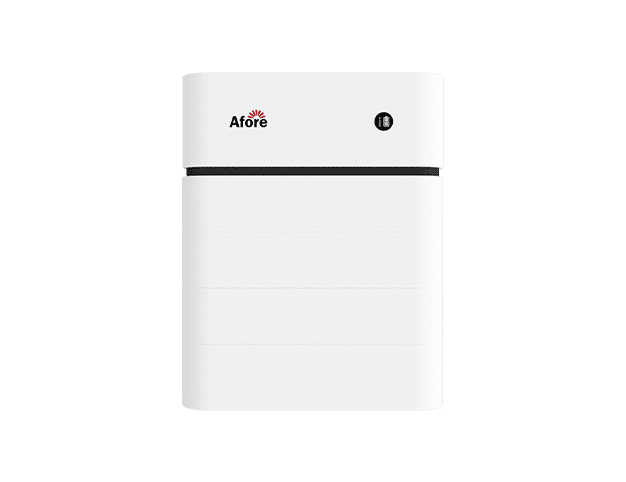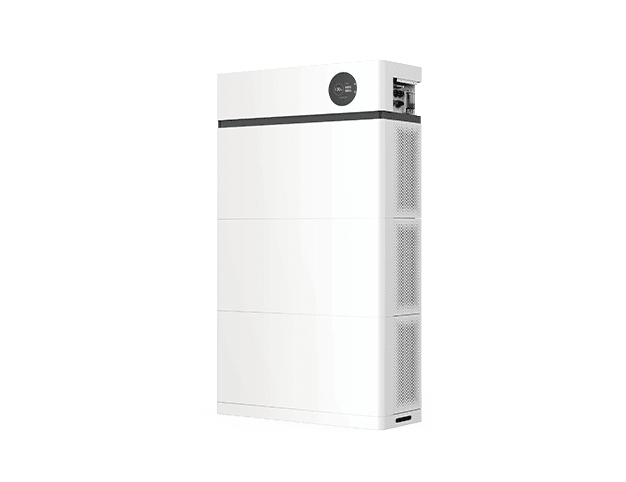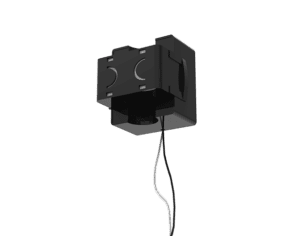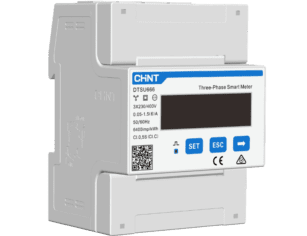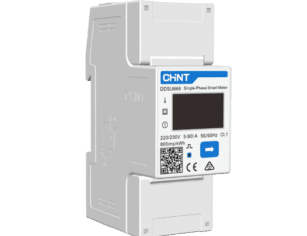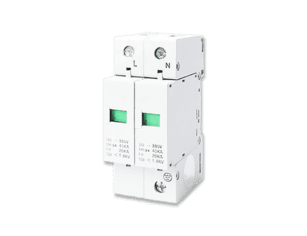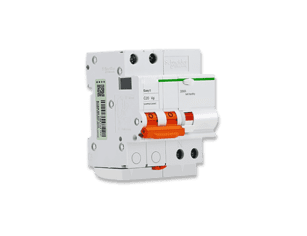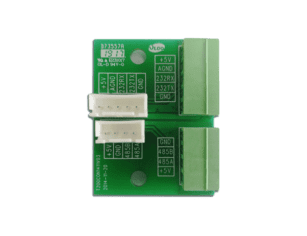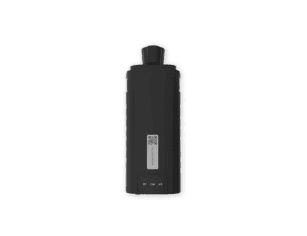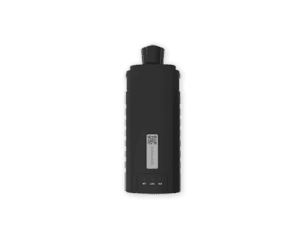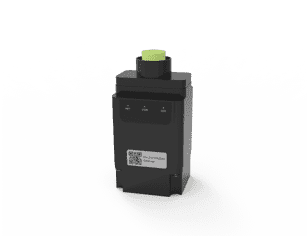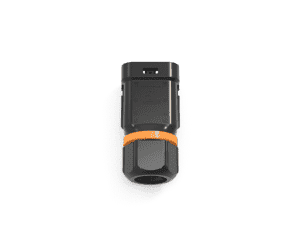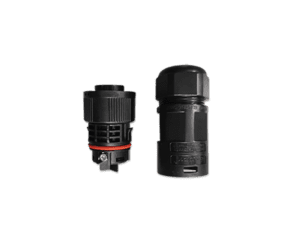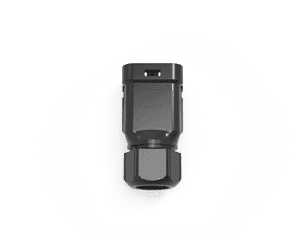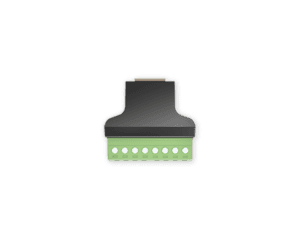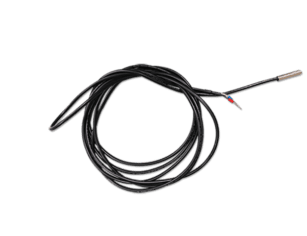O que é um inversor híbrido?
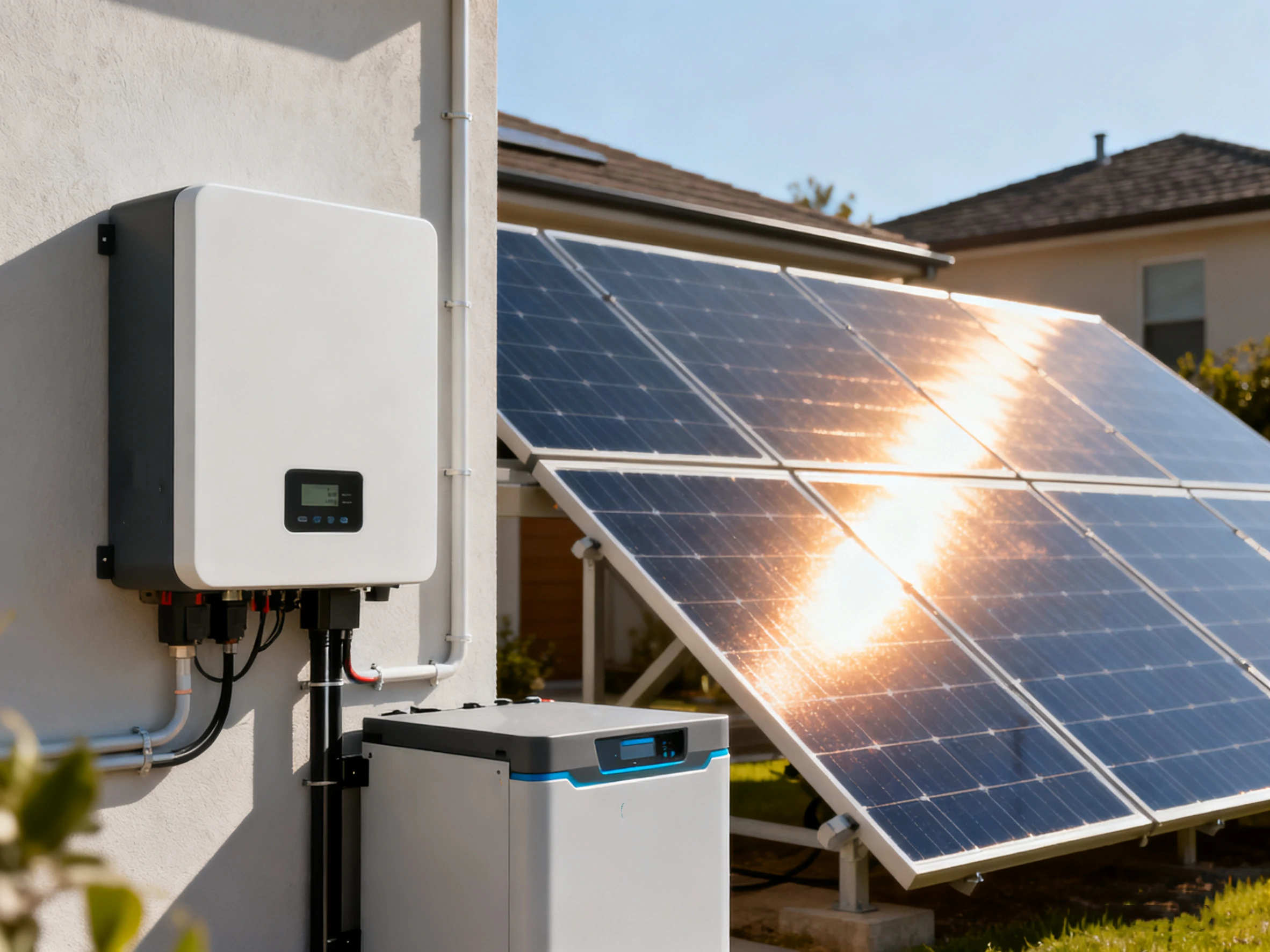
Índice
If you’ve been exploring solar energy options, you’ve likely come across the term hybrid inverter. But what exactly is a inversor híbrido and how does it differ from a traditional solar inverter? In this article we’ll unpack not only the definition of a hybrid inverter, but also how it works, its pros and cons, how it compares to a normal solar inverter, and whether it’s right for your system. We’ll also answer key questions like “Is it worth getting a hybrid inverter?” and “What is the lifespan of a hybrid inverter?” By the end of this in-depth guide, you’ll have a clear understanding of hybrid inverters, and you’ll be equipped to make an informed decision.
Understanding Solar Inverters – The Basics
O que é um inversor solar?
Before diving into hybrid inverters, it’s helpful to refresh what a solar inverter is. A solar inverter is a device in a photovoltaic (PV) system that converts the direct current (DC) electricity generated by solar panels into alternating current (AC) electricity, which the appliances in your home and the grid operate on. Without a solar inverter, the energy produced by solar panels remains DC and is not usable by most standard household or grid loads.
There are several types of solar inverters—string inverters, micro-inverters, and grid-tie inverters—all designed to manage this DC→AC conversion. A typical grid-tie solar inverter will simply feed your home loads and, when allowed, send excess power to the utility grid.
Limitations of a “normal” solar inverter
While a conventional solar inverter is a proven, reliable component of many solar installations, it does carry limitations. A normal solar inverter often does not include integrated battery management or storage capability. In many grid-tie setups, if there’s a grid outage the system shuts off for safety (anti-islanding), meaning solar production cannot serve your home during an outage. Further, if you decide later to add battery storage, your existing solar inverter may be incompatible or require expensive retrofits. In short: a normal solar inverter can be simpler and cheaper upfront, but offers less flexibility.
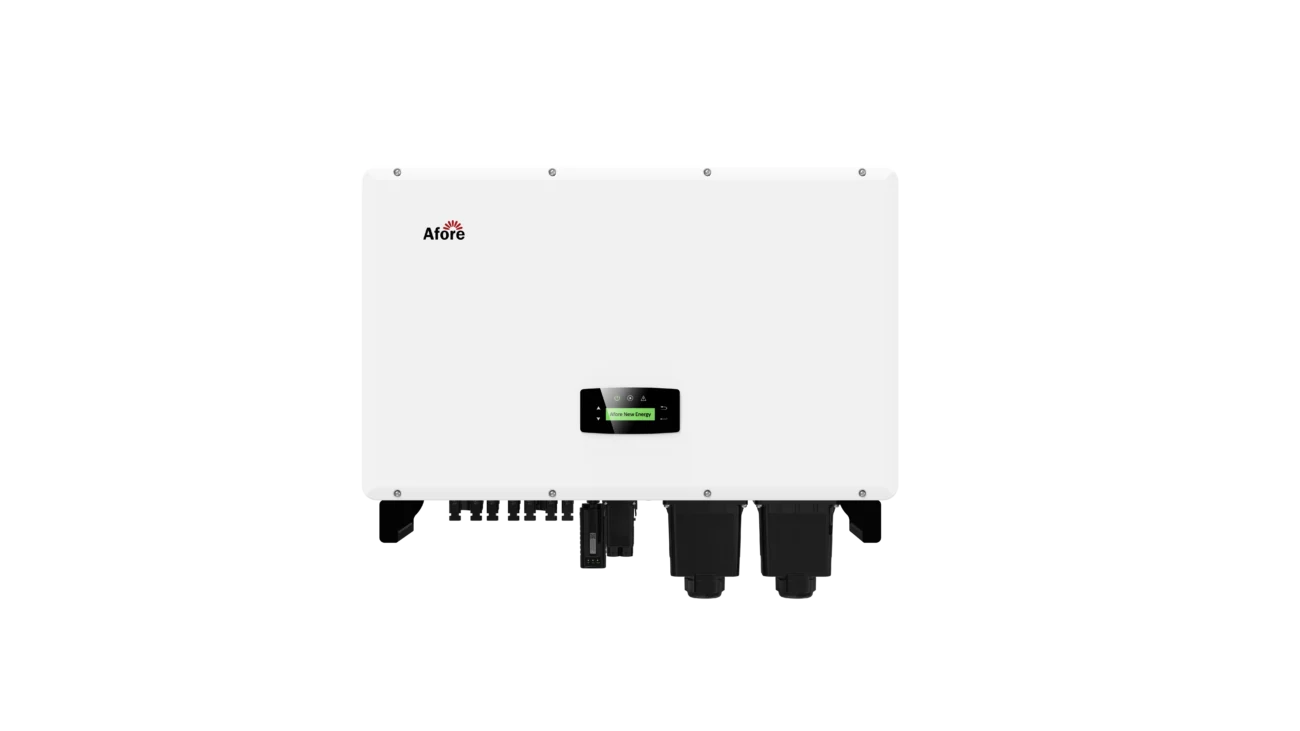
O que é um inversor híbrido?
A hybrid inverter is at the heart of the next generation of solar power systems. It bridges the gap between traditional grid-tied setups and fully off-grid solar systems by combining both solar inverter and battery inverter functionality into one intelligent unit. In other words, instead of simply converting solar power for immediate use or grid export, a hybrid inverter manages multiple energy flows—solar panels, battery storage, and the utility grid—seamlessly and automatically.
In modern residential and commercial systems, energy efficiency and reliability are key concerns. The hybrid inverter answers both by allowing solar electricity to be used more effectively and stored for later. It can work in tandem with or independently from the grid, depending on how the system is designed. For homeowners seeking energy independence, backup power, or better control over electricity costs, the hybrid inverter has become the cornerstone of solar innovation.
Definition and Core Functions
A hybrid inverter can be defined as an integrated power-conversion device that performs three critical roles in one piece of equipment:
- Solar conversion (DC to AC): It converts direct current (DC) electricity from solar panels into alternating current (AC) electricity for home appliances and the grid.
- Battery management (charging and discharging): It directs excess solar power into batteries, stores it, and later draws from those batteries when solar generation is insufficient.
- Grid coordination (import and export): It interacts with the electrical grid—feeding in excess power when permitted or drawing power from it during periods of low generation or high demand.
This combination allows the hybrid inverter to intelligently manage where electricity should go at any given time: to the home, to the battery, or to the grid. In essence, it acts as the brain of a solar inverter system with storage, ensuring the most efficient use of renewable energy resources.
Unlike a standard solar inverter, which typically operates in a single direction (from solar panels to the grid or home), the hybrid inverter operates bi-directionally. It not only converts solar DC into usable AC but can also invert AC from the grid into DC to charge the battery if that option is enabled. This dual-flow capability makes it far more versatile and efficient for energy management.
From an operational standpoint, the hybrid inverter’s microprocessors continuously monitor voltage, frequency, and power demand in real time. It makes split-second decisions—when to charge, discharge, or export—to maintain stability and optimize consumption. This automation is what sets hybrid inverters apart from conventional inverters, giving them the intelligence to balance self-consumption, savings, and resilience simultaneously.
How a Hybrid Inverter Works (Operational Flow)
To understand the value of a hybrid inverter, it’s important to see how energy moves through it over the course of a typical day.
1. Daytime Solar Generation
During daylight hours, solar panels produce DC electricity. The hybrid inverter converts this DC into AC to power the household or business. Its first priority is to meet the building’s energy demand directly.
2. Battery Charging
If solar production exceeds real-time consumption, the hybrid inverter automatically channels the excess DC electricity into the connected battery bank for storage. This stored energy becomes an on-site “energy reserve” for use later—during the night, on cloudy days, or during grid outages.
3. Grid Export
Once the battery is fully charged and the household demand is satisfied, any remaining energy is exported to the grid, provided that the system is grid-connected and allowed to send electricity back. Depending on the local regulations, you might receive credits or compensation for this exported power.
4. Evening and Night Use
After sunset, when solar panels stop producing power, the hybrid inverter reverses the energy flow. It discharges the stored electricity from the battery to power the home, reducing or even eliminating the need to draw energy from the grid during peak-rate hours.
5. Grid Support or Import
If both solar and battery power are insufficient, the hybrid inverter automatically pulls electricity from the grid to maintain supply. This transition happens smoothly, without noticeable interruption to appliances.
6. Backup Power Mode
In the event of a grid failure, a properly configured hybrid inverter can switch to “island mode,” isolating the system from the grid. It then uses solar panels and stored battery energy to continue powering critical loads such as lighting, refrigeration, or medical equipment.
This operational flexibility makes the hybrid inverter the control hub of a smart solar-plus-storage system. It ensures that energy is always used, stored, or exported in the most efficient way possible.
The device also enables advanced energy management strategies, such as time-of-use optimization. For example, it can charge batteries with cheap grid power at night and use that stored energy during expensive peak hours—a function not possible with a basic solar inverter.
Through continuous monitoring, precise switching, and seamless transitions between energy sources, the hybrid inverter provides not just power—but control, security, and optimization.
System Components
A hybrid inverter operates as the central component of a broader energy ecosystem. To work efficiently, it relies on several interconnected parts and careful system design.
1. Solar Panels
These are the primary power generators. They convert sunlight into DC electricity, which is then fed into the hybrid inverter. The inverter’s job is to ensure that this energy is either used immediately, stored in batteries, or exported to the grid. The size and number of solar panels determine how much power is available for conversion and storage.
2. Hybrid Inverter
Acting as the system’s “control center,” the hybrid inverter manages real-time energy flow. It decides how to allocate power—prioritizing self-use, charging batteries, or grid export. Its built-in intelligence enables dynamic balancing of these functions to maximize efficiency and minimize waste.
3. Battery Storage System
The battery bank is what truly distinguishes a hybrid inverter system from a basic solar inverter setup. Batteries store excess energy for later use, providing flexibility and independence from grid fluctuations. The hybrid inverter controls the charging and discharging cycles to maintain battery health and longevity.
4. Monitoring and Control Interface
Modern hybrid inverters come with sophisticated monitoring interfaces, often via digital displays or connected mobile platforms. Users can track generation, consumption, battery state of charge, and grid interaction in real time. This transparency enhances system management and energy awareness.
5. Grid Connection
If the system is designed as grid-tied, it integrates seamlessly with the utility network. The hybrid inverter synchronizes with grid voltage and frequency, ensuring safe and efficient operation while preventing back-feed during outages.
Considerações sobre a instalação
Because a hybrid inverter system involves more components and operating modes than a simple solar inverter setup, proper design and installation are crucial. Key considerations include:
- System sizing: The inverter must be appropriately sized to handle the total DC input from solar panels and the load demand. Oversizing or undersizing can lead to inefficiency or reduced lifespan.
- Battery compatibility: The inverter should match the voltage, chemistry, and capacity of the selected battery bank. Using incompatible components can cause performance losses or safety issues.
- Electrical layout: Proper wiring, isolation switches, fusing, and grounding are critical for safe operation. Hybrid systems require additional safety mechanisms to handle bidirectional power flow.
- Cooling and ventilation: Because hybrid inverters handle significant energy throughput, adequate ventilation and temperature management help maintain efficiency and durability.
- Professional installation: These systems should be installed by qualified professionals familiar with hybrid inverter technology. Precise configuration ensures smooth integration between solar, storage, and grid connections.
When installed and configured correctly, a hybrid inverter system can deliver high efficiency, reliable backup power, and measurable energy savings. It represents the evolution of solar technology—from simple grid-tie systems toward smart, adaptable, and resilient home energy ecosystems.
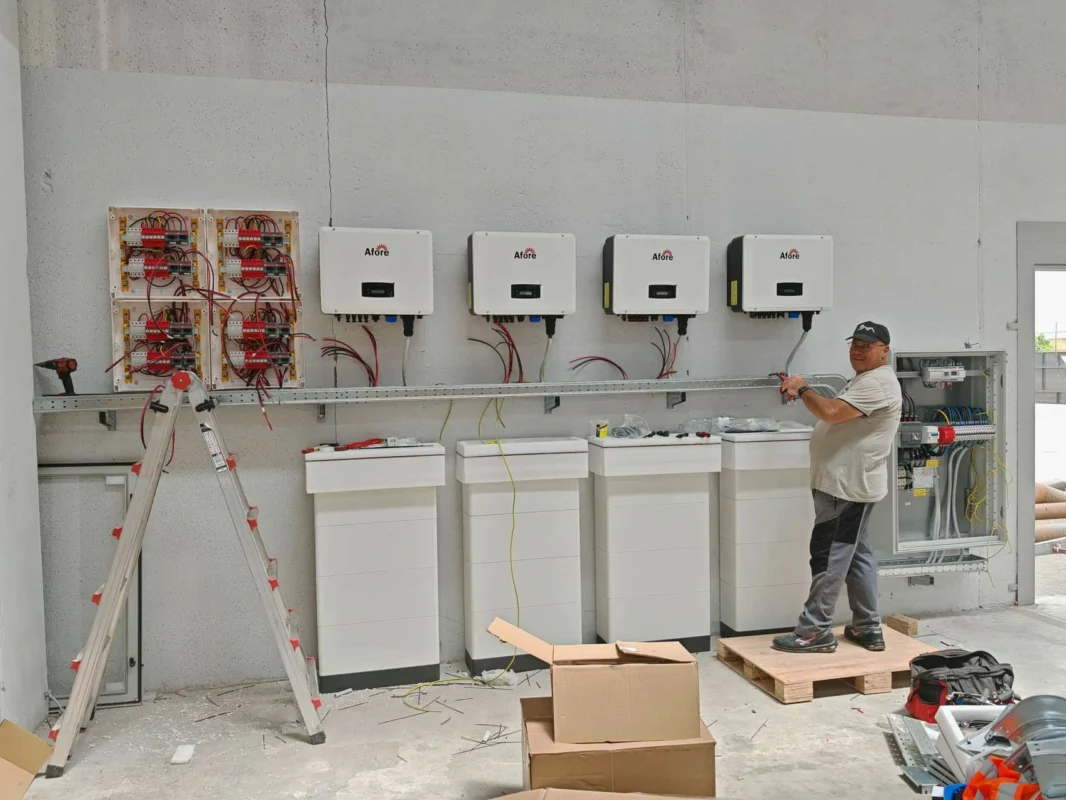
Inversor híbrido vs. Inversor normal: uma comparação detalhada
Feature-by-feature comparison
Let’s compare side-by-side:
- Battery support: A normal solar inverter typically does not include battery integration or management; a hybrid inverter does.
- Backup power / outage resilience: A normal solar inverter usually shuts off during grid outage; a hybrid inverter (with battery) can support loads when the grid is down.
- Upgradability: A normal inverter may require replacement if you later want battery storage; a hybrid inverter built-in supports battery now or later.
- Cost & complexity: A normal inverter is typically less expensive and simpler; a hybrid inverter has higher upfront cost and installation complexity.
- Efficiency: A simple solar inverter may have marginally higher conversion efficiency because of fewer functions; a hybrid inverter may have slight trade-offs due to the multi-functional role.
- Monitoring & control: Hybrid inverters often come with advanced monitoring and energy-management features; normal inverters may provide basic performance read-outs.
Advantages of a normal inverter (when it makes sense)
If your grid connection is reliable, you don’t plan to add battery storage, and you’re simply installing a solar system to offset daytime consumption, a normal solar inverter may be the best value. It has a lower upfront cost, simpler design, and fewer components to maintain. For many homeowners with stable grid and no interest in storage, this is a sensible choice.
Advantages of a hybrid inverter (and when it is preferable)
If you want a system that offers future-proofing, battery storage readiness, backup power capability, and optimized self-consumption of solar, then the hybrid inverter is a strong contender. For example, if your region has frequent outages or high utility tariffs during peak periods, a hybrid inverter paired with a battery bank can allow you to store excess solar and draw it when needed—reducing peak demand charges and improving resilience.
Drawbacks and trade-offs
However, the hybrid inverter is not without disadvantages. It typically costs more than a normal solar inverter. Installation is more complex, sometimes requiring additional components, wiring and planning. Also, not all hybrid inverters are compatible with all battery types or future expansions—so you must ensure you choose an appropriate model now. In retrofit cases, converting an existing solar inverter system into hybrid may require substantial work. Efficiency can also be slightly lower due to the additional functions the hybrid inverter performs.
Pros and Cons of Using a Hybrid Inverter for Solar Systems
Key benefits (Pros)
Using a hybrid inverter offers several compelling advantages:
- Power resiliency & backup capability: With a battery‐connected hybrid inverter, you’re less vulnerable to grid outages. The system can keep essential loads powered when the grid fails.
- Future-ready battery integration: A hybrid inverter allows you to install solar now and add battery storage later without replacing the inverter. That flexibility is attractive for many homeowners.
- Enhanced self-consumption of solar energy: Instead of sending excess solar to the grid (or wasting it), a hybrid inverter can store that energy for use when the sun isn’t shining—improving efficiency of your solar investment.
- Simplified monitoring and management: Many hybrid inverter systems include apps or dashboards that monitor solar production, battery state‐of‐charge, grid interaction, making the system more transparent and manageable.
- Grid-tie and battery export flexibility: The hybrid inverter can allow exports of surplus solar to the grid, or import when beneficial—giving more control over your energy flows.
Key disadvantages (Cons)
On the flip side, you should be mindful of the drawbacks of a hybrid inverter:
- Higher upfront cost: The device and system complexity mean the hybrid inverter cost is usually greater than a standard solar inverter system.
- More complex installation and design: Sizing, compatibility, configuration of battery, inverter and solar array require more planning and experienced installers.
- Potential limitations in future upgrades: Some hybrid inverters may only work with certain battery types or may restrict future expansions; your upgrade path may be less flexible.
- Slight efficiency trade-offs: Because the hybrid inverter handles extra functions (battery charging/discharging, grid import/export), some energy loss may occur compared to a simple solar inverter.
- Maintenance and battery health concerns: The battery bank adds another subsystem that needs monitoring and eventual replacement; the hybrid inverter system may require more maintenance over life.
Mitigation strategies for the disadvantages
To counter those disadvantages, consider the following:
- Choose a hybrid inverter model that supports a broad range of battery chemistries and future capacity expansions—future-proof your investment.
- Work with a reputable, experienced installer who understands hybrid inverter systems, battery management, and grid/battery interface design.
- Do a proper cost-benefit analysis up front: account for battery cost, maintenance, utility rate structure, outage frequency, and expected savings from self-consumption.
- Monitor system performance regularly, keep firmware up to date, maintain battery health and replace components proactively to maximize lifespan.
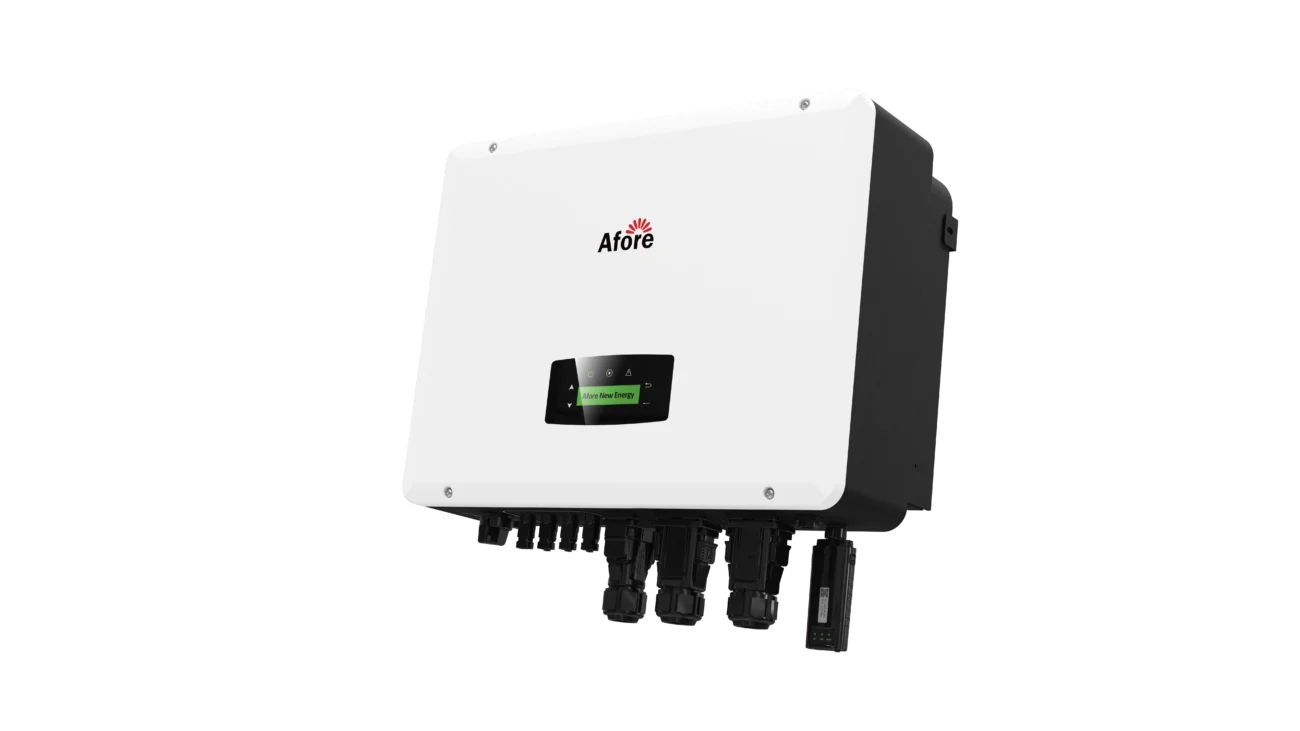
How to Choose the Right Inverter for Your Solar System
Selecting the right hybrid inverter for your solar setup is not simply a matter of price or power rating—it’s a long-term decision that determines how efficiently your entire energy system will perform. A well-chosen inverter maximizes solar yield, improves storage performance, and ensures safety and longevity. When evaluating your options, it’s important to understand how different features align with your energy goals, property layout, and consumption habits.
Choosing the best solar inverter—particularly a hybrid model—requires balancing technical specifications with lifestyle considerations. Below are key factors every homeowner or business owner should evaluate before making the final decision.
1. Determine Your Energy Needs and System Goals
The first step is to clearly define your energy priorities. Ask yourself:
- Do you want to reduce energy bills by maximizing self-consumption?
- Are you looking for backup power during grid outages?
- Is your primary goal energy independence or environmental sustainability?
If your aim is to store solar energy and use it strategically—especially during nighttime or emergencies—a hybrid inverter is often the most suitable choice. For simple grid-feed systems without storage, a standard solar inverter may suffice. Understanding your objectives ensures that your inverter’s capabilities align with your energy strategy, rather than limiting it.
2. Check System Compatibility
Compatibility between components is one of the most overlooked but crucial aspects of system design. The hybrid inverter must work seamlessly with your chosen solar panels, battery bank, and grid connection.
- Voltage range: Ensure the inverter supports the total DC voltage from your solar array.
- Battery compatibility: Match the inverter with your battery’s chemistry (lithium-ion, lead-acid, etc.), voltage, and capacity.
- Grid synchronization: For grid-tied setups, confirm that the inverter complies with local grid standards and regulations.
Selecting a hybrid inverter that is compatible with both your solar and battery systems prevents energy losses, improves performance, and minimizes maintenance issues over time.
3. Consider System Size and Inverter Capacity
The inverter’s rated capacity must match or slightly exceed your solar array’s power output. A hybrid inverter that is too small will limit solar generation, causing potential energy waste. Conversely, an oversized inverter may lead to inefficiency and unnecessary costs.
A useful rule of thumb is to size your inverter at around 80–120% of your solar panel capacity. However, real-world factors—such as local climate, shading, and household consumption patterns—should also guide your choice.
If you plan to expand your solar capacity or battery bank later, consider an inverter with flexible input and expansion options. This foresight ensures scalability without having to replace core equipment in the future.
4. Evaluate Efficiency Ratings
Efficiency determines how effectively your inverter converts DC electricity into usable AC power. Every percentage point matters: a difference of just 1% in conversion efficiency can translate into noticeable energy savings over time.
For most modern hybrid inverters, efficiency ratings range between 95% and 98%. Look for:
- Peak efficiency: The maximum conversion efficiency under ideal conditions.
- European efficiency: The weighted efficiency under real-world variable conditions, providing a more accurate performance measure.
Higher efficiency means more of your generated solar power is utilized rather than lost during conversion. In long-term energy economics, this directly affects your return on investment.
5. Assess Features and Smart Capabilities
Modern hybrid inverters come with intelligent management features that optimize energy flow and provide valuable insights into performance. When comparing models, consider features such as:
- Real-time monitoring and data tracking via apps or web dashboards.
- Time-of-use management, allowing you to store energy when electricity is cheap and use it during expensive peak hours.
- Automatic grid switchover during outages for uninterrupted power supply.
- Load prioritization, so critical appliances remain powered even when supply is limited.
These features not only enhance system performance but also improve user control and energy awareness. A smart hybrid inverter helps you take full advantage of your solar investment by aligning consumption with generation in real time.
6. Check Installation Environment and Conditions
Where and how you install your hybrid inverter has a major impact on performance and lifespan. Consider the following factors before installation:
- Indoor vs. outdoor placement: Some inverters are designed for outdoor use, while others require protection from rain, dust, and temperature fluctuations.
- Ventilation: Hybrid inverters generate heat during operation. Ensure adequate airflow to prevent overheating and maintain efficiency.
- Accessibility: The inverter should be installed in a location that is easy to reach for maintenance, inspection, or troubleshooting.
Proper installation reduces operational strain, prevents premature wear, and ensures optimal safety. Always follow professional installation standards and local electrical codes.
7. Review Warranty, Lifespan, and After-Sales Support
A hybrid inverter is a long-term investment, typically lasting 10–15 years or more. Before purchasing, review the warranty terms and available support options. A strong warranty reflects the manufacturer’s confidence in the product’s durability and performance.
Beyond warranty coverage, consider the availability of technical support, firmware updates, and maintenance services. A hybrid inverter that can receive remote software updates ensures your system remains optimized for future grid standards and energy regulations.
8. Cost vs. Value Consideration
While cost is a key factor, the cheapest option is rarely the best in the long run. Instead of focusing solely on upfront price, evaluate total cost of ownership, which includes:
- Efficiency and energy savings over time
- Maintenance and reliability
- Compatibility with future upgrades
A slightly higher investment in a more efficient, feature-rich hybrid inverter often pays for itself through improved performance and longer lifespan.
9. Seek Professional Advice
Given the complexity of solar energy systems, consulting with a certified installer or energy specialist can help you make a more informed decision. Professionals can perform a load analysis, assess your site’s solar potential, and recommend an inverter that best matches your system’s technical and financial goals.
They can also ensure compliance with local regulations, safety standards, and grid interconnection rules—critical aspects that DIY buyers often overlook.
10. Plan for Future Energy Expansion
As solar technology evolves, energy consumption patterns change—think electric vehicles, smart home devices, or new storage options. Choosing a hybrid inverter that supports scalability ensures that your system remains future-ready.
Look for flexible configurations that allow:
- Adding more solar panels
- Expanding battery storage
- Integrating future technologies such as energy management systems or microgrids
This forward-thinking approach transforms your solar installation into a dynamic, adaptable energy ecosystem rather than a fixed setup.
Lifespan, Maintenance, and Performance of Hybrid Inverters
The hybrid inverter is the central brain of a solar-plus-storage system, and its durability directly affects the stability, efficiency, and return on investment of your solar setup. Understanding how long it lasts, how to maintain it, and what factors influence its performance can help you maximize the lifetime value of your solar inverter system.
A hybrid inverter isn’t a short-term component—it’s a long-term energy asset. With proper installation, good environmental conditions, and regular care, it can operate reliably for over a decade, often performing at high efficiency throughout most of its life cycle.
1. Expected Lifespan of a Hybrid Inverter
On average, a hybrid inverter lasts between 10 to 15 years, depending on environmental exposure, system configuration, and usage intensity. Some well-maintained systems can even exceed this range.
Several key factors determine its actual lifespan:
- Operating temperature: Hybrid inverters are sensitive to heat. High ambient temperatures can accelerate electronic wear, while proper ventilation extends component life.
- Load consistency: Frequent operation at maximum capacity can reduce longevity. A balanced load profile ensures less thermal stress.
- Installation quality: Systems installed by experienced professionals, with proper grounding and weatherproofing, typically perform better and last longer.
- Electrical protection: Use of surge protectors and proper fuses helps prevent damage from voltage spikes or grid fluctuations.
Just like a car engine performs best under ideal conditions, a hybrid inverter thrives when operated within its rated limits and maintained regularly.
2. Key Maintenance Practices
Unlike mechanical equipment, hybrid inverters require minimal routine maintenance, but consistency matters. Keeping the system clean, cool, and properly monitored ensures long-term stability and safety.
Here are essential maintenance steps to preserve performance and longevity:
- Visual inspection: Check for dust, corrosion, or loose connections at least once every few months. Clean the exterior gently with a dry or slightly damp cloth.
- Cooling system care: Ensure that the cooling vents and fans are free of obstructions. Overheating is one of the main causes of premature inverter failure.
- Firmware and monitoring updates: Hybrid inverters often come with built-in monitoring systems. Regularly check for software updates that improve performance and ensure compliance with evolving grid standards.
- Periodic professional checks: Have a qualified technician inspect internal components, wiring, and protective devices annually to detect early signs of wear or imbalance.
- Battery maintenance: Since hybrid inverters interact closely with batteries, ensuring the health of the battery bank is crucial. Keep terminals clean, and follow the manufacturer’s charging guidelines.
Consistent care not only maintains efficiency but also prevents small issues—like overheating or electrical imbalance—from evolving into costly breakdowns.
3. Performance Optimization
A hybrid inverter’s performance depends on how efficiently it can manage the flow of solar power, stored energy, and grid supply. Optimal performance means achieving maximum conversion efficiency and intelligent energy use under varying conditions.
Key performance indicators include:
- Conversion efficiency: A quality hybrid inverter should operate above 95% efficiency, minimizing energy losses during DC-to-AC conversion.
- Response time: The ability to quickly switch between power sources (solar, battery, or grid) without interruption ensures consistent energy supply.
- Load management: Intelligent hybrid inverters automatically prioritize energy usage, directing solar power to essential loads or charging batteries when demand is low.
- Monitoring precision: Accurate real-time monitoring allows better insight into power generation and consumption, leading to informed energy decisions.
Performance also depends on environmental factors such as shading, ambient temperature, and system cleanliness. Regularly cleaning solar panels and ensuring good air circulation around the inverter can have a noticeable impact on efficiency.
4. Signs of Declining Performance
Even the best hybrid inverter will show signs of aging over time. Recognizing early warning signals allows for timely maintenance or replacement before full failure occurs. Look out for:
- Reduced output efficiency compared to initial performance levels.
- Unusual noises from the inverter’s cooling system.
- Frequent disconnections from the grid or unexpected shutdowns.
- Error codes or warning lights that persist after rebooting.
If these issues appear, a diagnostic inspection should be carried out immediately. Often, minor faults can be fixed without a full replacement if identified early.
5. Environmental and Operational Impact
The environment in which a hybrid inverter operates plays a major role in its longevity.
- Temperature: Install the inverter in a shaded, well-ventilated space away from direct sunlight. Excess heat reduces component efficiency and lifespan.
- Humidity and dust: Moisture can corrode circuits, while dust buildup hinders cooling. In coastal or dusty areas, extra protection such as enclosures or filters is recommended.
- Power quality: In regions with unstable grid voltage or frequent power surges, protective devices should be installed to safeguard sensitive electronic parts.
By managing these conditions proactively, you can significantly extend the inverter’s operational life and maintain stable output for years.
6. End-of-Life Considerations
When a hybrid inverter reaches the end of its service life, it doesn’t mean the entire solar system must be replaced. Typically, the solar panels and battery bank continue functioning efficiently for years beyond the inverter’s lifespan.
Replacement involves choosing a new hybrid inverter that integrates seamlessly with your existing system. Before replacement, it’s wise to evaluate any advancements in technology—newer inverters may offer improved efficiency, smarter controls, or better energy management features.
Recycling or responsibly disposing of old inverters also contributes to sustainable solar practices, aligning with the environmental values that solar energy promotes.
7. Maximizing the Lifespan of Your Hybrid Inverter
To keep your hybrid inverter performing optimally for as long as possible:
- Install it in a cool, dry, and clean environment.
- Schedule annual professional inspections.
- Maintain good airflow and avoid overloading the inverter.
- Use real-time monitoring tools to catch issues early.
- Ensure all cables and terminals remain tight and corrosion-free.
These proactive steps ensure your inverter continues to deliver strong performance, stable energy flow, and a high return on your solar investment.
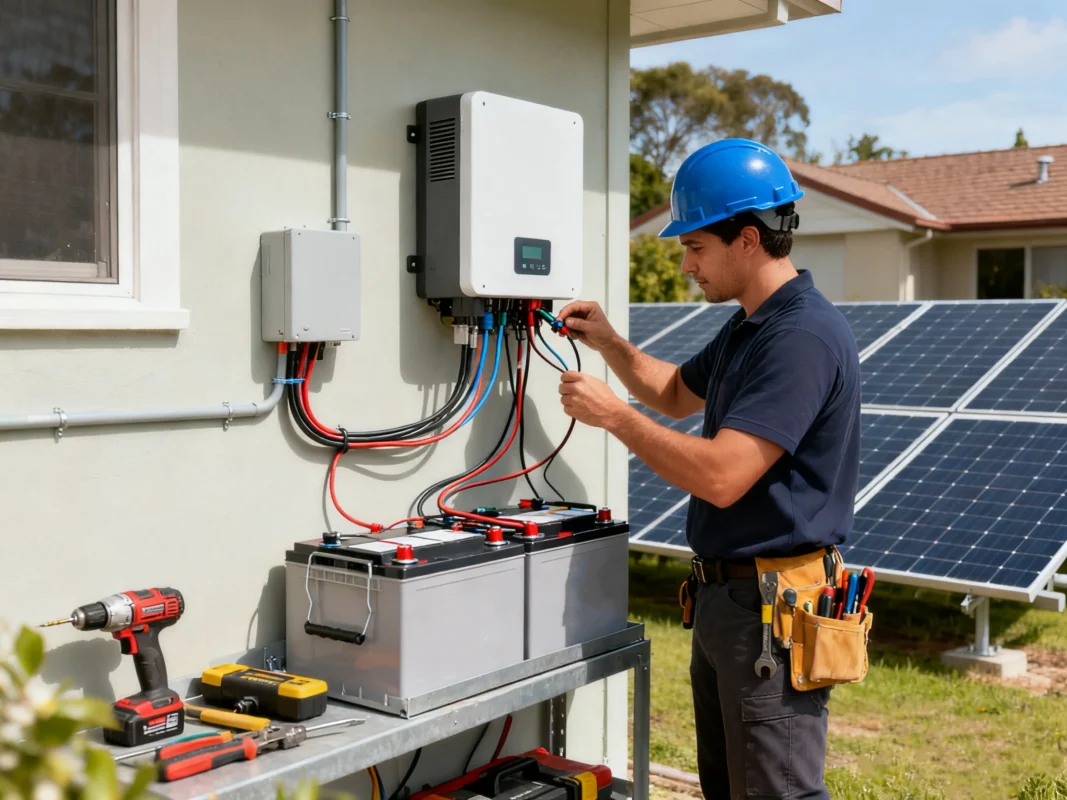
Use Cases and Scenarios for Hybrid Inverters
The hybrid inverter stands out as one of the most versatile technologies in the renewable energy landscape. It seamlessly integrates solar power generation, energy storage, and grid interaction, making it suitable for a variety of applications and environments. Whether installed in residential homes, commercial buildings, or remote off-grid areas, a hybrid inverter can be tailored to meet different energy demands and objectives.
Understanding its use cases helps clarify why the hybrid inverter is quickly becoming the preferred choice for those seeking both energy efficiency and independence.
1. Residential Solar Systems with Battery Storage
One of the most common applications of a hybrid inverter is in residential solar systems where homeowners aim to reduce grid dependence and electricity bills. In this scenario, the hybrid inverter allows the solar panels to power household loads during the day while storing excess energy in batteries for later use.
At night or during cloudy periods, the inverter automatically switches to the stored power, maintaining an uninterrupted energy supply. In areas with variable grid reliability or time-of-use pricing, this function can significantly reduce energy costs and ensure consistent power for essential appliances.
Homeowners benefit from:
- Self-consumption optimization, using solar power directly instead of exporting it.
- Energy resilience, keeping lights and key appliances on during grid outages.
- Long-term savings, by using stored energy during expensive peak hours.
This setup turns a standard home into a smart, self-sufficient energy system managed intelligently by the hybrid inverter.
2. Commercial and Industrial Applications
For businesses, power reliability directly impacts productivity. A hybrid inverter offers a strategic way to stabilize operations by managing solar generation, energy storage, and grid support dynamically.
In commercial settings such as offices, warehouses, or manufacturing plants, hybrid inverters can:
- Reduce peak demand charges by using stored solar power during high-tariff periods.
- Ensure operational continuity by providing backup energy during blackouts.
- Improve sustainability credentials, supporting corporate energy-efficiency goals.
Additionally, hybrid inverters enable precise energy monitoring, giving facility managers real-time insights into energy flow and performance. This data-driven approach supports long-term energy optimization and financial planning.
3. Off-Grid and Remote Area Installations
For regions where grid access is limited or unavailable, the hybrid inverter acts as the central hub of a stand-alone energy system. It coordinates power generation from solar panels and energy storage to supply reliable electricity in remote locations such as rural homes, lodges, farms, or telecommunication stations.
These systems provide:
- Complete grid independence, powered entirely by renewable energy.
- Automatic balancing between solar generation and stored energy.
- Reduced reliance on diesel generators or other costly fossil-fuel backups.
By intelligently managing energy production and consumption, hybrid inverters make off-grid living both feasible and sustainable, offering a cleaner, quieter alternative to traditional power sources.
4. Backup Power for Critical Infrastructure
Hybrid inverters are increasingly used in mission-critical environments where power loss is not an option—such as hospitals, data centers, or emergency response facilities.
In these scenarios, the inverter continuously monitors grid stability. When an outage occurs, it instantly switches to battery power, ensuring uninterrupted supply to essential systems. Once the grid stabilizes, it seamlessly reverts to normal operation, often recharging the batteries automatically.
Key benefits include:
- Zero downtime for critical systems.
- Automated power transitions that require no manual intervention.
- Improved energy reliability in areas prone to grid instability.
This capacity for instantaneous energy management positions the hybrid inverter as a cornerstone technology for modern energy resilience.
5. Time-of-Use Optimization in Urban Areas
In cities with tiered electricity rates, hybrid inverters enable strategic energy management. They can store energy during off-peak hours—when electricity prices are low—and discharge it during peak periods, when grid electricity is most expensive.
This “energy arbitrage” approach allows urban homeowners and small businesses to:
- Minimize utility costs without compromising energy availability.
- Reduce grid dependence during high-demand periods.
- Support grid stability by avoiding excessive load during peak times.
Over time, this smart energy scheduling not only cuts bills but also reduces pressure on the utility grid, supporting broader sustainability goals.
6. Hybrid Systems for Rural Electrification Projects
In developing or rural regions, hybrid inverters play a vital role in decentralized electrification projects. By combining solar panels, battery storage, and sometimes auxiliary generators, these systems bring reliable power to communities far from the main grid.
Benefits for such installations include:
- Scalability, as hybrid systems can expand with growing community needs.
- Low maintenance, compared to traditional power infrastructure.
- Sustainable development, by promoting renewable energy over fossil fuels.
This application demonstrates how hybrid inverters contribute not just to energy efficiency, but also to social and environmental progress.
7. Emergency Power for Residential and Commercial Use
Another practical scenario involves using hybrid inverters as part of an emergency backup system. During power failures caused by storms, equipment faults, or maintenance outages, the inverter isolates the property from the grid and powers critical loads using stored solar energy.
For homeowners, that might mean keeping refrigerators, lighting, and communication devices operational. For small businesses, it could mean maintaining essential equipment and data servers until normal power resumes.
This ensures both comfort and continuity, minimizing the disruptions caused by grid outages.
Summary & Final Thoughts
To recap: a hybrid inverter is a smart, versatile choice when you want to take your solar energy system to the next level—integrating solar panels, battery storage and grid interaction in one smart device. While a standard solar inverter still works well for many homeowners, particularly those with stable grid access and no storage ambition, a hybrid inverter offers future-proofing, backup capability and better self-consumption of solar energy.
When choosing between a solar inverter or a hybrid inverter, you should carefully assess your energy goals, grid reliability, budget, and future plans (battery storage, EV integration, load growth). If you anticipate adding batteries or want resilience and control, the hybrid inverter is compelling despite the higher upfront cost. Just be sure you work with an experienced installer, choose battery-compatible and expandable equipment, and maintain the system well.
If you want to maximize your solar-panel investment, reduce reliance on the grid, and prepare for future energy-storage expansions, the hybrid inverter may be the right path. If you simply want to offset daytime grid consumption with solar and keep things simple, a standard inversor solar still has merit.
Perguntas frequentes
-
O que é um inversor híbrido?
A hybrid inverter is a multifunctional power management device that combines the features of a solar inverter and a battery inverter in one unit. It converts the direct current (DC) generated by solar panels into alternating current (AC) used by household appliances, while also managing battery charging and discharging.
Unlike a traditional solar inverter, which only sends power directly to your home or the grid, a hybrid inverter intelligently directs energy to different destinations—your home, battery storage, or the utility grid—based on real-time demand and production levels.
In essence, it acts as the control center of a solar-plus-storage system, enabling energy independence, improved self-consumption, and reliable backup power. -
What is the difference between a hybrid inverter and a normal inverter?
The main difference lies in functionality. A normal solar inverter only converts DC electricity from solar panels into AC for immediate use or export to the grid. It cannot store excess energy.
A hybrid inverter, on the other hand, integrates battery management capabilities. It can store unused solar energy in batteries and discharge it when solar production is low—such as at night or during cloudy weather.
In other words, a hybrid inverter manages both energy conversion and storage, while a standard inverter handles only conversion. This makes hybrid inverters ideal for homeowners who want both savings and resilience against power interruptions. -
What does a hybrid inverter do?
A hybrid inverter performs three essential tasks:
1. Converts solar DC electricity into usable AC power.
2. Directs excess energy into batteries for storage.
3. Coordinates with the utility grid for exporting or importing electricity as needed.
It constantly monitors energy generation and consumption to ensure efficient use of solar power. When solar output is high, it charges the battery. When demand increases, it discharges the stored energy. And during outages, it automatically switches to backup mode to keep essential devices running.
Essentially, the hybrid inverter balances solar generation, energy storage, and grid power—all in one intelligent system. -
Qual é a desvantagem de um inversor híbrido?
While hybrid inverters offer numerous benefits, they also come with certain limitations:
• Higher upfront cost: They are generally more expensive than basic solar inverters due to added functionality.
• Complex installation: Proper setup requires expert design and configuration to ensure compatibility with solar panels and batteries.
• Maintenance and updates: Some systems may require firmware updates or periodic checks to maintain peak performance.
• Battery dependence: In hybrid setups, system performance may be affected if the connected battery is undersized or poorly maintained.
However, these drawbacks are often outweighed by the long-term benefits—such as greater energy independence, savings, and flexibility. -
Is it worth getting a hybrid inverter?
Yes, for most users, investing in a hybrid inverter is absolutely worth it. If your goal is to maximize self-consumption, ensure backup power, or prepare for future energy expansion, a hybrid inverter provides the flexibility and intelligence needed.
It allows you to store solar energy for nighttime use, lower electricity bills, and stay powered during outages—all while contributing to a more sustainable lifestyle. Though the initial cost may be higher, the long-term savings and independence typically justify the investment. -
Qual é a vida útil de um inversor híbrido?
A typical hybrid inverter lasts between 10 to 15 years, depending on the installation environment, load conditions, and maintenance quality. With proper care, ventilation, and regular inspections, many can last even longer.
Key factors influencing lifespan include temperature, humidity, and consistent power usage. Keeping the inverter cool, clean, and protected from extreme weather significantly extends its operational life. -
Can we run a hybrid inverter without a battery?
Yes, a hybrid inverter can operate without a battery. In this configuration, it functions much like a traditional solar inverter—converting solar energy for direct use or grid export.
However, without a battery, you lose the ability to store energy for later use or maintain power during outages. Adding a battery in the future is possible, which makes the hybrid inverter a flexible and future-ready choice. -
How efficient are hybrid inverters compared to traditional ones?
Modern hybrid inverters are highly efficient, often achieving conversion rates above 95%. While traditional inverters can have slightly higher peak efficiency due to simpler operation, hybrid inverters make up for this with smarter energy management.
By optimizing energy flow between solar panels, batteries, and the grid, they reduce waste and maximize overall system efficiency across various conditions. -
Do hybrid inverters work during power outages?
Yes, when paired with a battery, a hybrid inverter can operate independently of the grid during power outages. It automatically isolates your system from the grid (a process known as islanding) and supplies power from the batteries and solar panels to essential household loads.
This feature provides reliable backup power for lighting, refrigeration, communication devices, or medical equipment, depending on system configuration. -
Are hybrid inverters future-proof?
Absolutely. The hybrid inverter is considered a future-proof solution for modern energy systems. It’s compatible with expanding solar arrays, new battery technologies, and emerging energy management systems.
As smart grids, dynamic pricing, and home automation continue to evolve, hybrid inverters can adapt to changing energy environments—making them a long-term investment in energy flexibility and sustainability. -
How do I maintain my hybrid inverter?
Maintaining a hybrid inverter involves simple but regular practices:
• Keep the unit clean and well-ventilated.
• Inspect connections and wiring periodically.
• Monitor system performance via the built-in display or monitoring app.
• Schedule professional inspections once a year.
By following these steps, you can ensure optimal performance and extend the inverter’s lifespan well beyond its expected service years. -
Can a hybrid inverter save money on electricity bills?
Yes, one of the main advantages of a hybrid inverter is its ability to reduce electricity costs. By storing excess solar energy and using it during high-tariff periods, homeowners can significantly lower grid consumption and save money each month.
Additionally, in regions that offer energy buyback or net metering, exporting surplus power to the grid can provide additional financial benefits. -
What size hybrid inverter do I need?
The size of the hybrid inverter you need depends on the total capacity of your solar panels and your household energy demand. In general, the inverter should match or slightly exceed the combined wattage of your solar array.
A professional installer can conduct an energy audit to determine the right inverter size, ensuring efficiency and compatibility with future system expansions. -
Are hybrid inverters environmentally friendly?
Yes. By enabling efficient solar energy utilization and reducing dependence on fossil fuels, hybrid inverters contribute significantly to environmental sustainability. They help minimize carbon emissions, promote renewable energy adoption, and support a cleaner, greener future.
-
Do hybrid inverters require internet connectivity?
Not necessarily, but it’s highly recommended. Internet connectivity allows you to monitor system performance remotely, receive updates, and identify potential issues early. However, even without internet access, a hybrid inverter will continue to function normally as a standalone energy controller.




